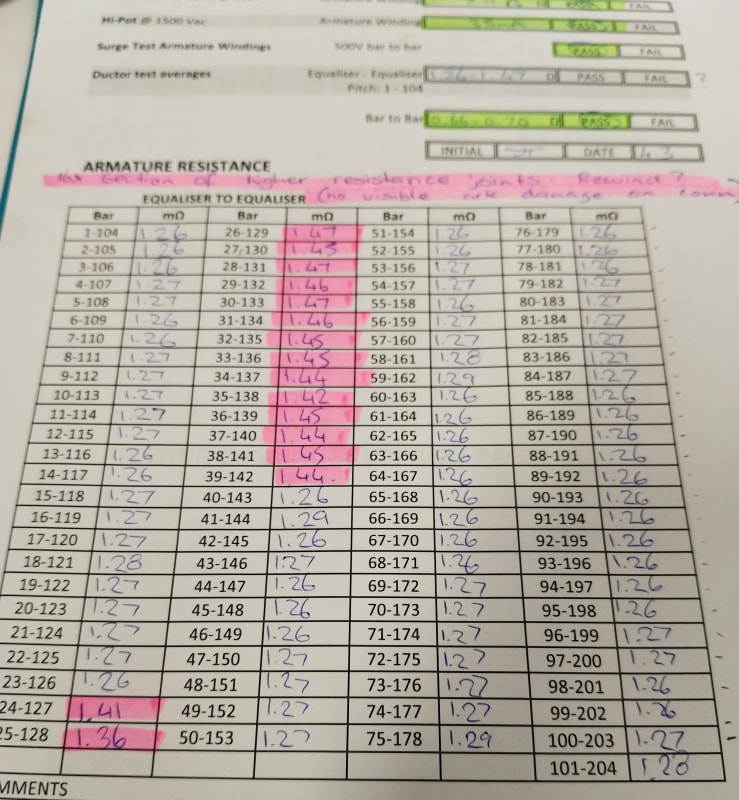Ria05
Electrical
- May 16, 2023
- 3
Hi
Need suggestion regarding DC traction motor Equalizer.
During periodic overhaul, while testing the commutator the bar to bar resistance values are within limit of 0.6 to 0.71 milli ohms, however the equalizer to equalizer resistance values 12 in a row are showing higher resistance values of around 1.4 to 1.59 milli ohms compared to other values which are around 1.15 to 1.29 m-ohms.
As a thumb rule if the resistance values 6 in a row are high then we suggest for rewind. However there are no relevant files on limits and guidance. Looking for suggestions on this.
Thanks
Ria
Need suggestion regarding DC traction motor Equalizer.
During periodic overhaul, while testing the commutator the bar to bar resistance values are within limit of 0.6 to 0.71 milli ohms, however the equalizer to equalizer resistance values 12 in a row are showing higher resistance values of around 1.4 to 1.59 milli ohms compared to other values which are around 1.15 to 1.29 m-ohms.
As a thumb rule if the resistance values 6 in a row are high then we suggest for rewind. However there are no relevant files on limits and guidance. Looking for suggestions on this.
Thanks
Ria

